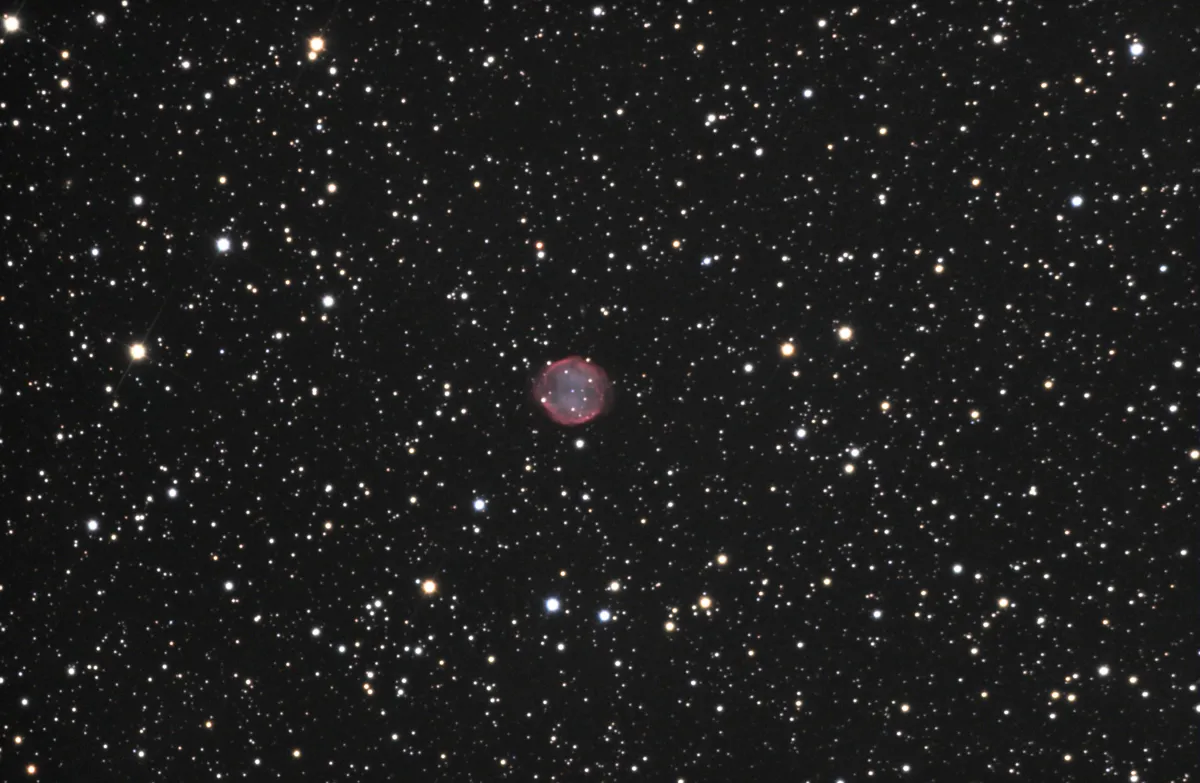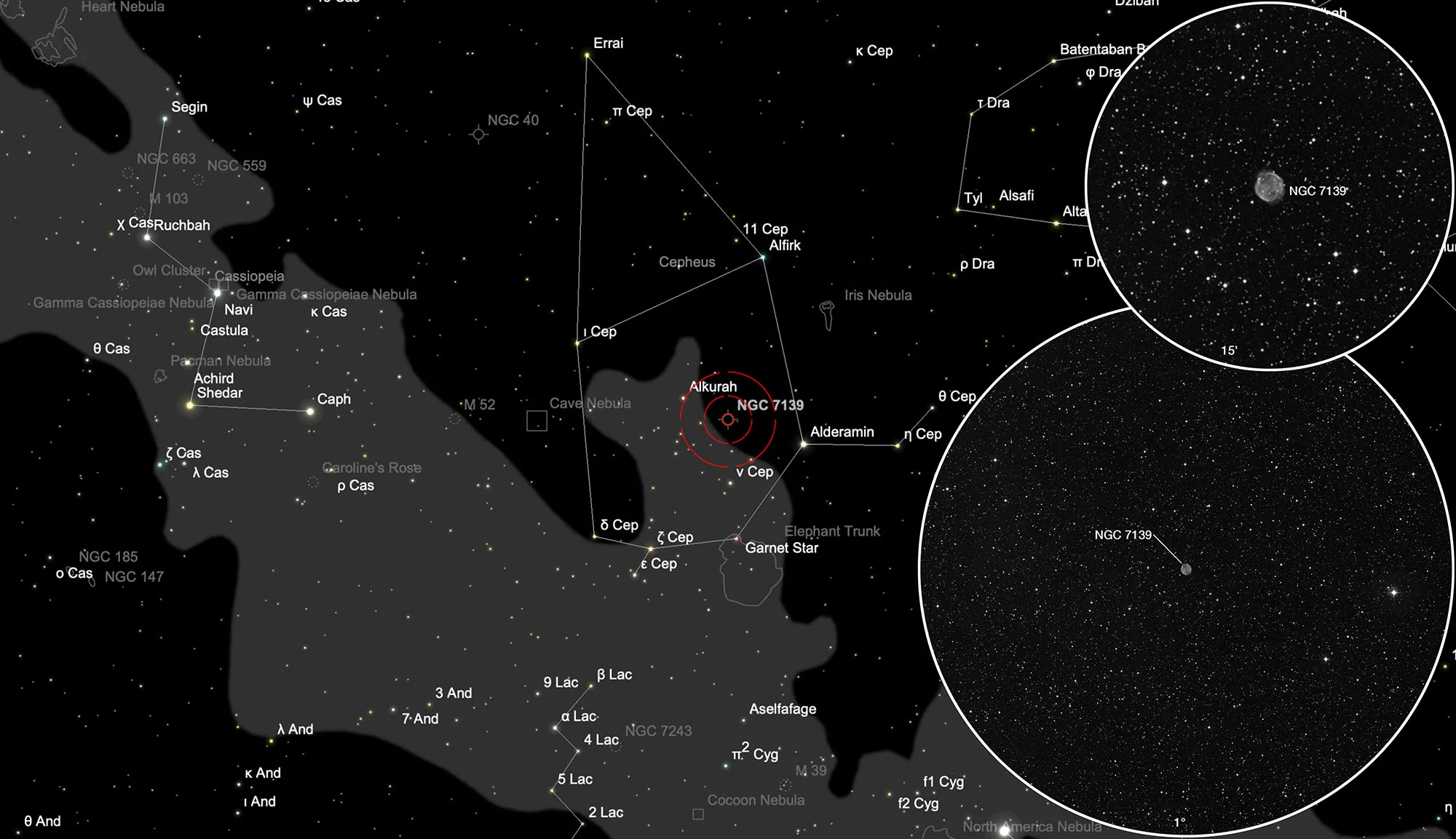Planetary Nebula NGC 7139

History
NGC 7139 was discovered on 5 November 1787 by the German-British astronomer William Herschel and identified as a planetary nebula by the American astronomer Heber Doust Curtis in 1918.
Physical Properties
The apparent visual magnitude of NGC 7139 is about 13 magnitudes. The distance determination of planetary nebulae is often not reliable. In 2008 it gave a distance of about 1400 parsecs, about 4500 light years. Older estimates went from 2400 parsecs, about 7800 light years. [132, 141, 145, 196, 349]
| Designations | PN G104.1+07.9: NGC 7139, PK 104+07.1, ARO 54, VV 270, VV' 557 |
| Right Ascension (J2000.0) | 21h 46m 10s |
| Declination (J2000.0) | +63° 47' 16" |
| Dimensions | 77." (optical) |
| Distance | 2.4 kpc |
| Radial Velocity | -54.4 ± 3.4 km/s |
| Expansion Velocity | 19.5 (O-III) km/s |
| C-Star Designations | AG82 436 |
| C-Star Magnitude | V: 18.72 |
| Discoverer | CURTIS 1918 |
Finder Chart
The planetary nebula NGC 7139 is located in the constellation Cepheus. On 18 August it is in opposition to the Sun and crosses the meridian at local midnight. The best viewing time is April to January when the constellation is highest in the night sky.
